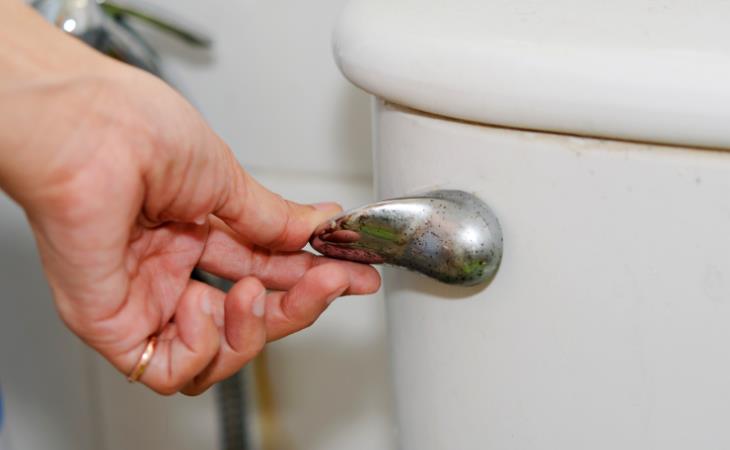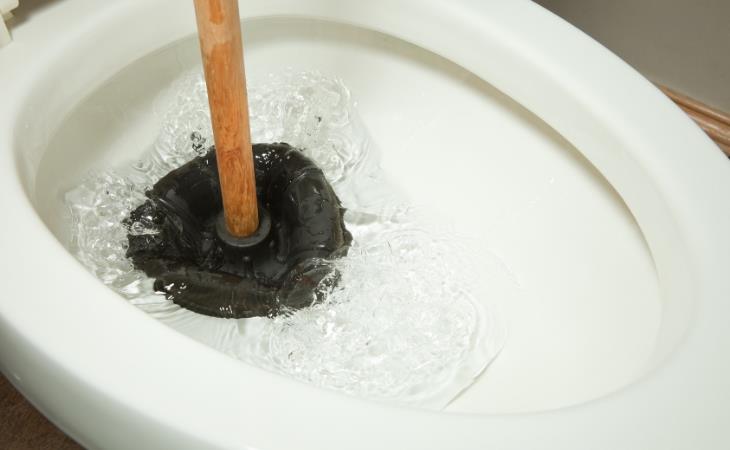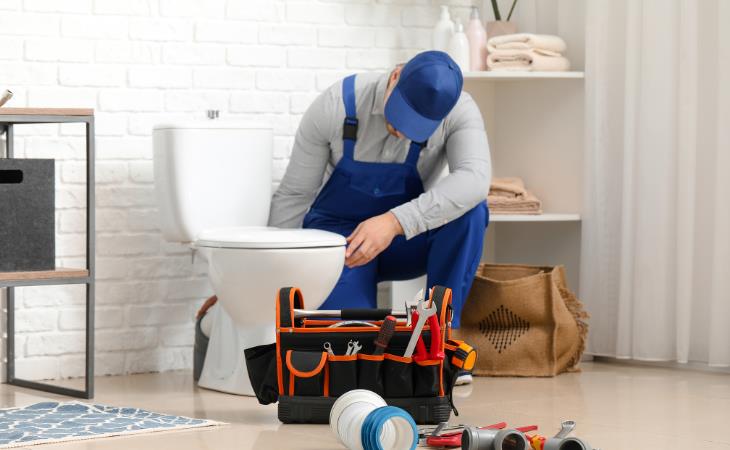


A clog is a common issue that interferes with the successful flushing of toilet bowl contents. Usually, these blockages happen when people use too much toilet paper without flushing properly. This causes a clog in the drain tube, limiting the capacity to flush further waste efficiently.
Solution: Use a toilet plunger or toilet auger to propel waste through the system, making the flushing procedure easier. Alternatively, you can use the plunger to create suction, which helps in the removal of paper waste that obstructs the flushing mechanism and allows it to move down the pipe. If clogs continue, consider switching to thinner toilet paper, especially if your household tends to use excessive amounts in a single use.
A faulty flush might be an indication of a defective or damaged flapper. The flapper is responsible for sealing the passage between the toilet tank and the bowl. Any warping, ripping, or damage to the flapper may cause unwanted water flow from the tank to the bowl and thus limit the toilet's capacity to flush properly owing to inadequate water in the tank.
Solution: Flappers are affordable and can be found at any hardware or home improvement store. Before replacing the old flapper with a new one, turn off the water and drain the tank. After that, run a test flush to confirm the toilet works properly.
Toilet tanks should have approximately one inch of water below the top of the overflow tube. If there is inadequate water, check the water valve, since it may have been accidentally turned off.
Solution: If the water level is about an inch below the rim of the overflow tube, locate the float, which looks like a circular ball and is connected to the fill valve. Lift the float arm up to start filling the water level. For toilets with an intake assembly, just elevate the metal clip to adjust the water level.
If the water valve is turned off, turn it on and check the water level in the tank to ensure it is replenished to the required level. Next, flush the toilet to ensure that it works properly once more.
Rim jets, which are located beneath the toilet bowl rim, are tiny apertures that are essential for proper flushing. Mineral deposits and debris can clog flushing systems, reducing their efficiency.
Solution: To resolve this issue, use a toilet brush or an old toothbrush. Use vinegar to clean the rim jets and get rid of mineral deposits and obstructions. After cleaning, flush the toilet to ensure that the flushing issue has been resolved.

In some cases, even if everything in your toilet is working properly, your toilet will not flush at all. This indicates an underlying problem in your plumbing system. The drain lines responsible for waste transportation to the sewer or septic system can face different issues. If a drain line fault is the cause of your non-flushing toilet, you may notice drainage problems throughout your home. Common symptoms include water backing up into sinks, showers, and tubs, as well as sluggish drainage.
Solution: Drain lines, like toilets, can become clogged. For a thorough cleaning, you may need to hire a plumber equipped with an extended auger. If your drain line is damaged or leaking, it may limit your toilet's flushing ability. Additionally, roots from trees and other plants in your yard may invade the drain line, requiring the entire area to be replaced.
Related: Repair a Running Toilet in No Time With These 4 Tips
Sometimes, the lift chain connecting the flapper to the flushing handle outside the toilet may have excessive slack. This prevents the handle from lifting the flapper to initiate a flush.
Solution: This issue can be resolved by shortening the chain's length to generate appropriate tension. This adjustment ensures the chain can effectively pull the flapper away from the flush tube and allows water to flow when the handle is activated.
Take a bucket of water and slowly pour it into the toilet bowl. Increase the speed gradually, and the water will push the waste in the bowl through the pipes, allowing you to flush the toilet as usual.